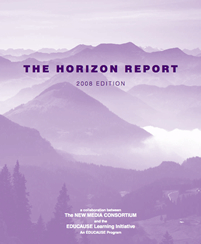Overview for Teachers
With the social appropriation of computers, the creation of the Internet, the advent of Web 2.0, and now the beginnings of the Semantic Web, the range of learning technologies available to the teacher is bewildering. These innovations are enabling exciting classroom activities to be developed at all levels of kids education (elementary to grade 12), and especially in those all-important areas of math (especially middle school math), reading comprehension and writing.
These technologies are also revolutionising educational programs at university and college level by opening ways for courses, seminars, discussion forums and other approaches to learning to be delivered electronically. This enables distance courses to be delivered using innovative ways to interact with instructors and other students.
The following are just a few of the learning technologies in use:
* Electronic Portfolios (ePortfolios)
* MP3 Players
* Web sites
* Web 2.0 tools
* Discussion and bulletin boards
* e-mail
* Social Media (Blogs, Chats, Wikis, Podcasts, etc)
* Social networking
* Educational animation, simulation, and games
* Learning Management Systems (LMS)
Click here to learn more about different technologies.
Sugata Mitra
Can kids teach themselves?
In the News
Open source browser upgrade
"Like the earlier 1.0, 1.5 and 2.0 versions, Firefox 3 - a free download for Windows 2000, XP and Vista; Mac OS X 10.4 and 10.5; and recent Linux releases at http://mozilla.com - makes the Web easier and safer to use in a few distinct ways. Its tabbed browsing lets you switch among multiple sites in one window, and a small box at the top right of every window lets you direct a query to your choice of Web search engines. "Find as you type" text searching jumps to a given word on a page in moments. Its separation from the guts of Windows makes it safer and more reliable than Internet Explorer. And Firefox's open-source code allows inspection by anybody, making for fast bug fixes."

